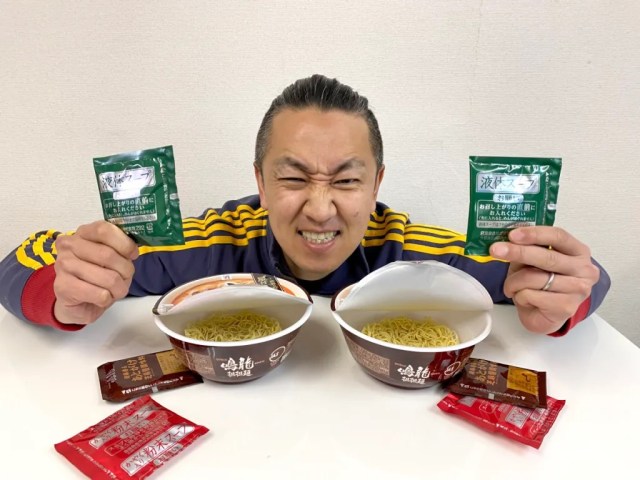
We find out if post-loading your ramen is better than pre-loading.
Our Japanese-language writing team often receives story suggestions from local readers, but one recent message got them thinking more than most. The simple email suggested they look into the world of instant ramen, saying:
“Nowadays, most liquid seasonings are added last, but why don’t you add them first and see if the taste changes?”
This was a challenge that appealed to our instant ramen-loving reporter P.K. Sanjun, who immediately headed out to his nearest convenience store to pick up two bowls of instant ramen.
▼ He purchased the Nakiryu Tantanmen from 7-Eleven.
Instant noodles like these used to include only powdered seasonings, which needed to be added before the hot water, but in recent years, liquid seasonings, added after the hot water, are also commonly included.
The so-called “post-loading” of liquid seasonings is recommended by noodle manufacturers, and it’s a method P.K. has never questioned…until now. Opening the lids, he prepped for the experiment by adding the regular dry seasonings to both, and popping the liquid seasoning into the one on the right.
P.K. has been so conditioned to adding the liquid seasoning after the hot water that just doing this made him feel guilty.
Grabbing the kettle of boiling hot water, he carefully poured the liquid into both and left them to sit for three minutes, as per the instructions.
When the time was up, he pulled the lids off both tubs, added the liquid seasoning into the one that didn’t have it, and lined them up side by side for a visual inspection.
▼ Pre-stirred, they looked markedly different, but after a good mix…
▼…there was no noticeable difference between them.
Now all that was left to do was taste the two of them, and P.K. made sure to get a generous mouthful of each for a fair tasting.
After gulping down two large mouthfuls, he was surprised to find there was no major difference in the taste of the soup, but what he did notice was…
▼ …a massive difference in the noodles.
The noodles in the tub with the pre-loaded seasonings were hard to loosen, with some tough strands remaining in the mix. On the other hand, the noodles in the tub made according to the manufacturer’s recommendations loosened up easily, with an even texture throughout.
This was a result P.K. hadn’t expected, so he picked up the phone and put a call in to the public relations department at Nissin, the Japanese company that first created instant noodles in 1958 and still retains the lion’s share of the market. As professionals in the industry, they were able to tell him why his noodles had been affected, and why the liquid seasonings really should be added after the hot water, saying:
“A common seasoning that’s added later is liquid soup, which has a high oil content. If this is added first, the surface of the noodles will become coated in oil, making it difficult for the hot water to soak through them. Pre-loading with the soup sachet may also cause the temperature of the hot water to drop, which can prevent proper rehydration of the noodles.”
Well, that certainly made a lot of sense to P.K., and now that he knows the reasons behind the manufacturer’s recommended preparation method, he’ll be following it religiously from now on.
The recommended method allows you to get the most delicious results from your instant ramen, so next time you’re tempted to pre-load everything all at once before adding hot water, we urge you to stop and think twice about it.
It might seem like slightly more effort, but the results are well worth it. There are times when it pays to throw the ramen rule book out the window, but when you want to get the best out of your ramen, sometimes it’s best to play by the rules.
Photos ©SoraNews24
● Want to hear about SoraNews24’s latest articles as soon as they’re published? Follow us on Facebook and Twitter!
[ Read in Japanese ]

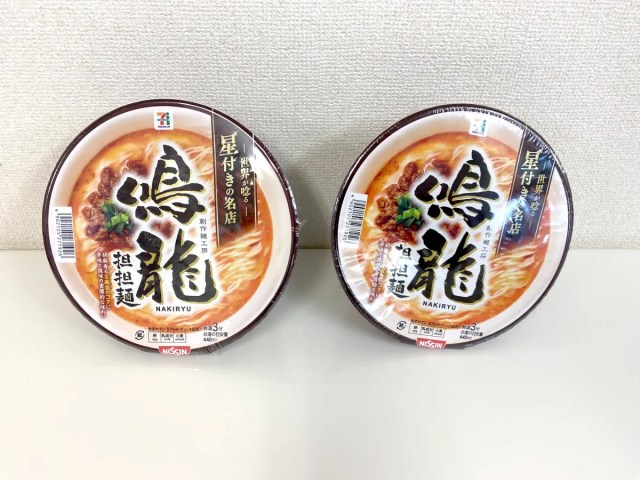
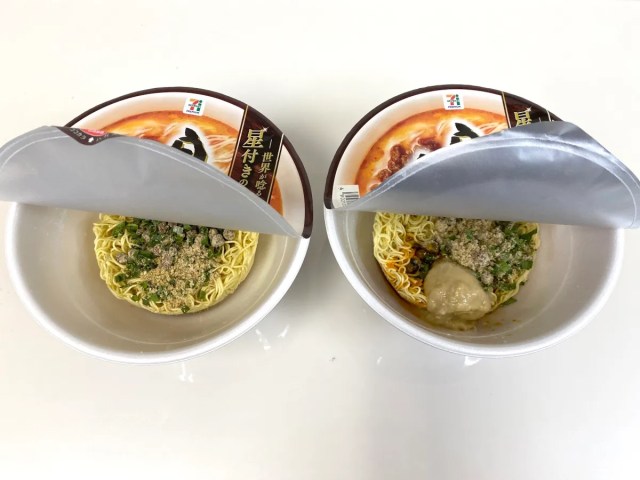
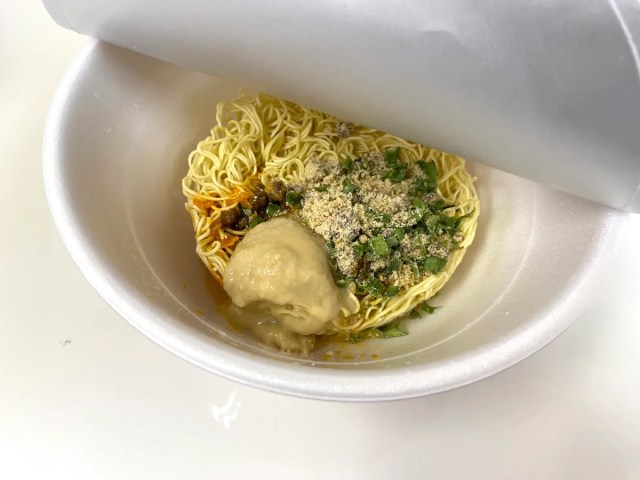
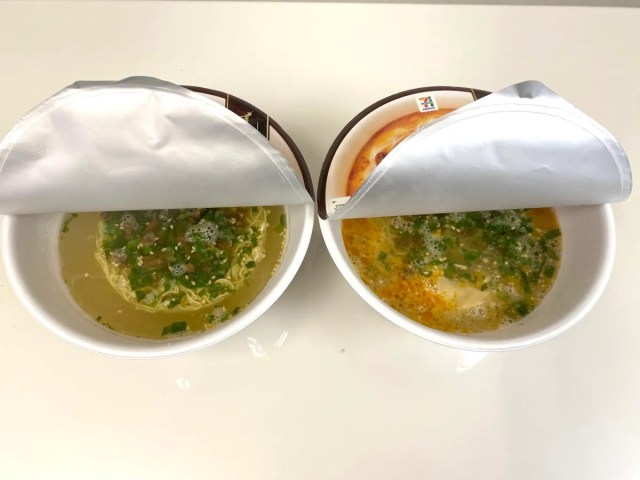
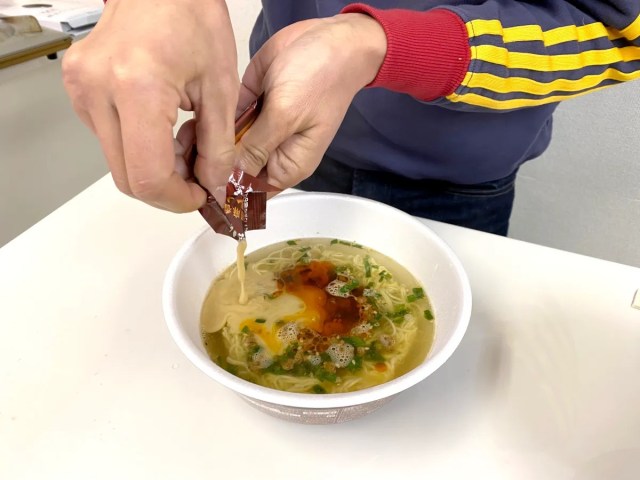

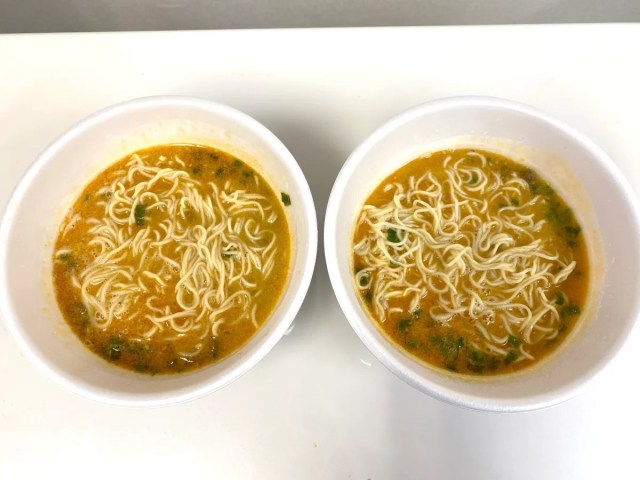
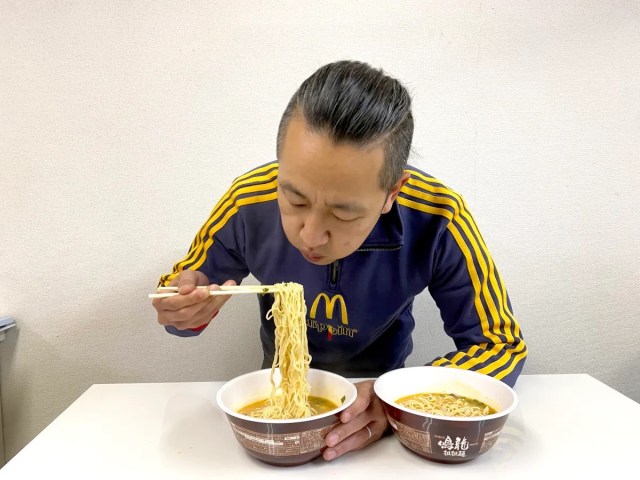


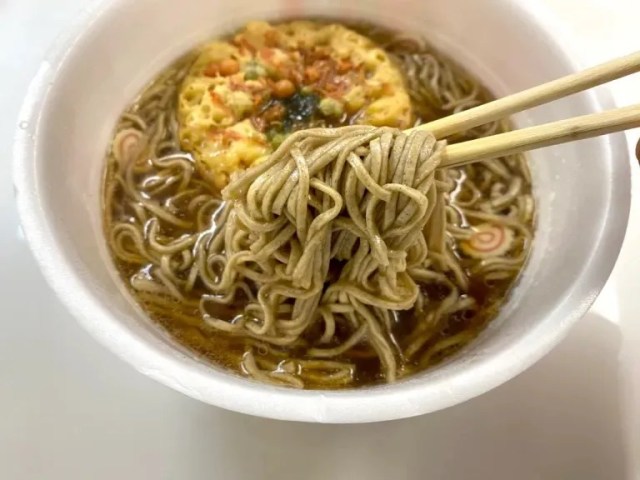

 We try the new Pringles instant cup ramen and yakisoba fried noodles from Japan
We try the new Pringles instant cup ramen and yakisoba fried noodles from Japan Clash of the instant ramen! Taste-testing seven instant noodles on a flavor trip across Kyushu
Clash of the instant ramen! Taste-testing seven instant noodles on a flavor trip across Kyushu Clever Cup Noodle-only measuring cup becomes instant ramen lovers’ new most-wanted kitchenware
Clever Cup Noodle-only measuring cup becomes instant ramen lovers’ new most-wanted kitchenware We get to be (probably) the first ever to try Nissin Cup Noodle’s latest creation: Gyoza ramen!
We get to be (probably) the first ever to try Nissin Cup Noodle’s latest creation: Gyoza ramen! Japan has instant ramen booster packs, and we’re not even trying to restrain ourselves【Taste test】
Japan has instant ramen booster packs, and we’re not even trying to restrain ourselves【Taste test】 Foreigner’s request for help in Tokyo makes us sad for the state of society
Foreigner’s request for help in Tokyo makes us sad for the state of society Japanese city loses residents’ personal data, which was on paper being transported on a windy day
Japanese city loses residents’ personal data, which was on paper being transported on a windy day Should you add tartar sauce to Japanese curry rice? CoCo Ichi makes diners an unusual offer
Should you add tartar sauce to Japanese curry rice? CoCo Ichi makes diners an unusual offer Seaside scenery, history, and so many desserts on Yokohama’s Akai Kutsu【Japan Loop Buses】
Seaside scenery, history, and so many desserts on Yokohama’s Akai Kutsu【Japan Loop Buses】 Harajuku Station’s beautiful old wooden building is set to return, with a new complex around it
Harajuku Station’s beautiful old wooden building is set to return, with a new complex around it Ghibli Park now selling “Grilled Frogs” from food cart in Valley of Witches
Ghibli Park now selling “Grilled Frogs” from food cart in Valley of Witches We try out “Chan Ramen”, an underground type of ramen popular in the ramen community
We try out “Chan Ramen”, an underground type of ramen popular in the ramen community Japanese company uses “crow language” to keep them away from garbage 【Video】
Japanese company uses “crow language” to keep them away from garbage 【Video】 Anti-NHK activist recommends “magic words” that will drive away fee collectors instantly
Anti-NHK activist recommends “magic words” that will drive away fee collectors instantly Anime girl English teacher Ellen-sensei becomes VTuber/VVTUber and NFT
Anime girl English teacher Ellen-sensei becomes VTuber/VVTUber and NFT McDonald’s new Happy Meals offer up cute and practical Sanrio lifestyle goods
McDonald’s new Happy Meals offer up cute and practical Sanrio lifestyle goods Japanese ramen restaurants under pressure from new yen banknotes
Japanese ramen restaurants under pressure from new yen banknotes French Fries Bread in Tokyo’s Shibuya becomes a hit on social media
French Fries Bread in Tokyo’s Shibuya becomes a hit on social media Studio Ghibli releases new action figures featuring Nausicaä of the Valley of the Wind characters
Studio Ghibli releases new action figures featuring Nausicaä of the Valley of the Wind characters Red light district sushi restaurant in Tokyo shows us just how wrong we were about it
Red light district sushi restaurant in Tokyo shows us just how wrong we were about it New private rooms on Tokaido Shinkansen change the way we travel from Tokyo to Kyoto
New private rooms on Tokaido Shinkansen change the way we travel from Tokyo to Kyoto Tokyo Tsukiji fish market site to be redeveloped with 50,000-seat stadium, hotel, shopping center
Tokyo Tsukiji fish market site to be redeveloped with 50,000-seat stadium, hotel, shopping center Beautiful Ghibli sealing wax kits let you create accessories and elegant letter decorations【Pics】
Beautiful Ghibli sealing wax kits let you create accessories and elegant letter decorations【Pics】 Studio Ghibli releases Kiki’s Delivery Service chocolate cake pouches in Japan
Studio Ghibli releases Kiki’s Delivery Service chocolate cake pouches in Japan New definition of “Japanese whiskey” goes into effect to prevent fakes from fooling overseas buyers
New definition of “Japanese whiskey” goes into effect to prevent fakes from fooling overseas buyers Our Japanese reporter visits Costco in the U.S., finds super American and very Japanese things
Our Japanese reporter visits Costco in the U.S., finds super American and very Japanese things All-you-can-drink Starbucks and amazing views part of Tokyo’s new 170 meter-high sky lounge
All-you-can-drink Starbucks and amazing views part of Tokyo’s new 170 meter-high sky lounge More foreign tourists than ever before in history visited Japan last month
More foreign tourists than ever before in history visited Japan last month New Pokémon cakes let you eat your way through Pikachu and all the Eevee evolutions
New Pokémon cakes let you eat your way through Pikachu and all the Eevee evolutions Disney princesses get official manga makeovers for Manga Princess Cafe opening in Tokyo
Disney princesses get official manga makeovers for Manga Princess Cafe opening in Tokyo Sales of Japan’s most convenient train ticket/shopping payment cards suspended indefinitely
Sales of Japan’s most convenient train ticket/shopping payment cards suspended indefinitely Sold-out Studio Ghibli desktop humidifiers are back so Totoro can help you through the dry season
Sold-out Studio Ghibli desktop humidifiers are back so Totoro can help you through the dry season Japanese government to make first change to romanization spelling rules since the 1950s
Japanese government to make first change to romanization spelling rules since the 1950s Ghibli founders Toshio Suzuki and Hayao Miyazaki contribute to Japanese whisky Totoro label design
Ghibli founders Toshio Suzuki and Hayao Miyazaki contribute to Japanese whisky Totoro label design Doraemon found buried at sea as scene from 1993 anime becomes real life【Photos】
Doraemon found buried at sea as scene from 1993 anime becomes real life【Photos】 Tokyo’s most famous Starbucks is closed
Tokyo’s most famous Starbucks is closed One Piece characters’ nationalities revealed, but fans have mixed opinions
One Piece characters’ nationalities revealed, but fans have mixed opinions We asked a Uniqlo employee what four things we should buy and their suggestions didn’t disappoint
We asked a Uniqlo employee what four things we should buy and their suggestions didn’t disappoint Princesses, fruits, and blacksmiths: Study reveals the 30 most unusual family names in Japan
Princesses, fruits, and blacksmiths: Study reveals the 30 most unusual family names in Japan Takeout ramen broth: A new Tokyo winter noodle trend that’s worth the hype? 【Taste Test】
Takeout ramen broth: A new Tokyo winter noodle trend that’s worth the hype? 【Taste Test】 We try the new Zero-Second Chicken Ramen: Is it worth the hype?【Taste Test】
We try the new Zero-Second Chicken Ramen: Is it worth the hype?【Taste Test】 The twin joys and dual sadnesses of eating ramen in the U.S.
The twin joys and dual sadnesses of eating ramen in the U.S. Japanese restaurant serves extra wide noodles next to Tokyo Station
Japanese restaurant serves extra wide noodles next to Tokyo Station Sriracha vending machines rising in Japan, our reporter tries it for first time (with Cup Noodle)
Sriracha vending machines rising in Japan, our reporter tries it for first time (with Cup Noodle) What does vegan ramen taste like? We try Veggie Brown Rice Ramen
What does vegan ramen taste like? We try Veggie Brown Rice Ramen How to turn your leftover instant ramen broth into delicious chawanmushi Japanese egg custard
How to turn your leftover instant ramen broth into delicious chawanmushi Japanese egg custard Craving ramen, but can’t find decent noodles? Transform your spaghetti with this pasta hack!
Craving ramen, but can’t find decent noodles? Transform your spaghetti with this pasta hack! We try the new Gaming Cup Noodle and Gaming Curry Rice from Nissin
We try the new Gaming Cup Noodle and Gaming Curry Rice from Nissin We try out Nissin’s new Cup Noodle Broth Hardening Powder to see if it really works
We try out Nissin’s new Cup Noodle Broth Hardening Powder to see if it really works Instant vs. Restaurant Ramen Project: Ippudo spicy miso tonkotsu battle【Taste test】
Instant vs. Restaurant Ramen Project: Ippudo spicy miso tonkotsu battle【Taste test】 How to make yoghurt ramen with instant noodles
How to make yoghurt ramen with instant noodles Michelin star-winning ramen can now be bought nationwide in cup noodle form
Michelin star-winning ramen can now be bought nationwide in cup noodle form This super easy cold Korean spicy ramen dish will make summer 100 times more delicious
This super easy cold Korean spicy ramen dish will make summer 100 times more delicious Ramen-flavor cooking sauce now on sale from one of Japan’s favorite noodle chains
Ramen-flavor cooking sauce now on sale from one of Japan’s favorite noodle chains Noodle-free ramen? Cup Noodle maker ditches the noodles in new ramen broth soups
Noodle-free ramen? Cup Noodle maker ditches the noodles in new ramen broth soups
Leave a Reply